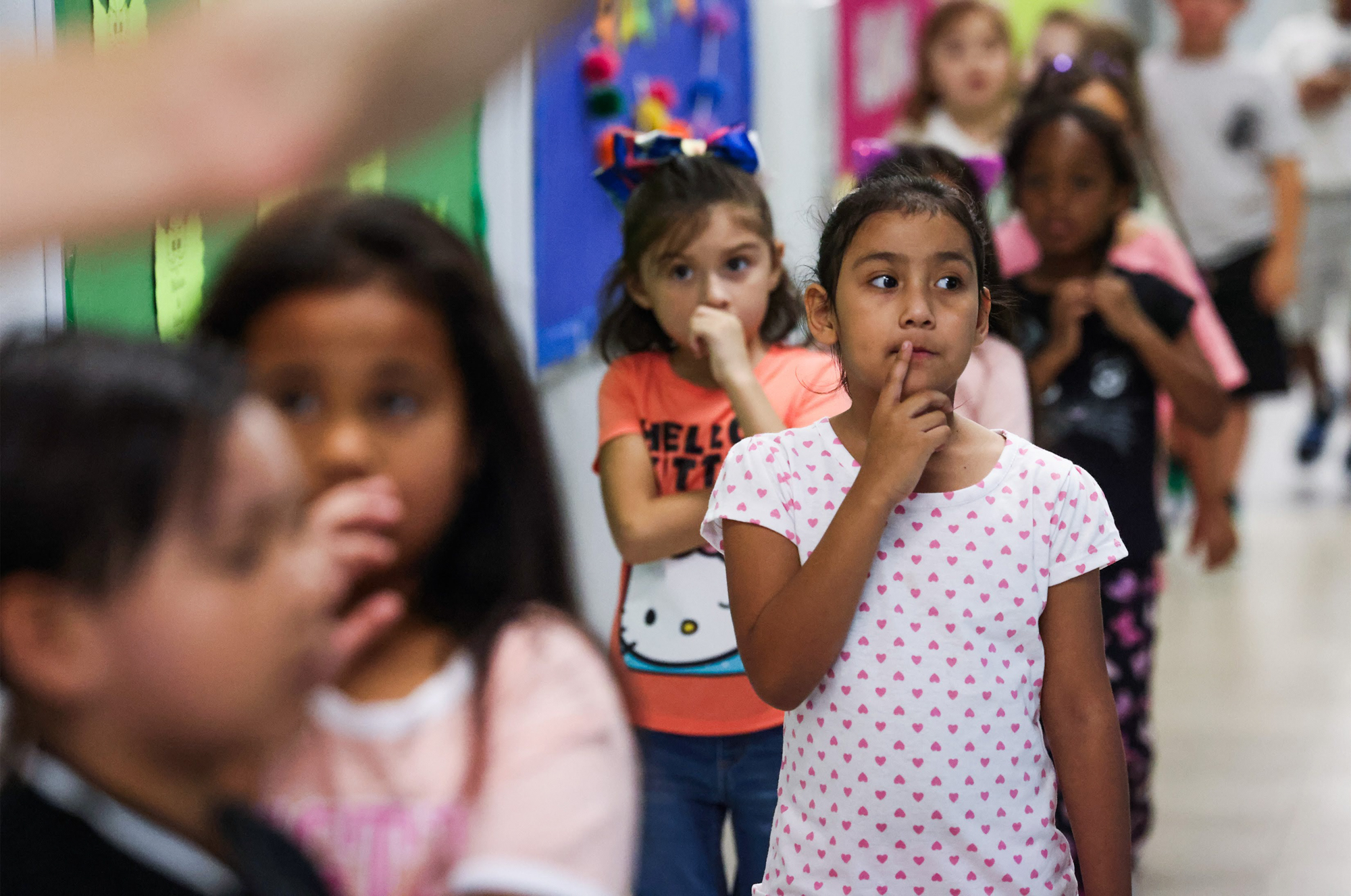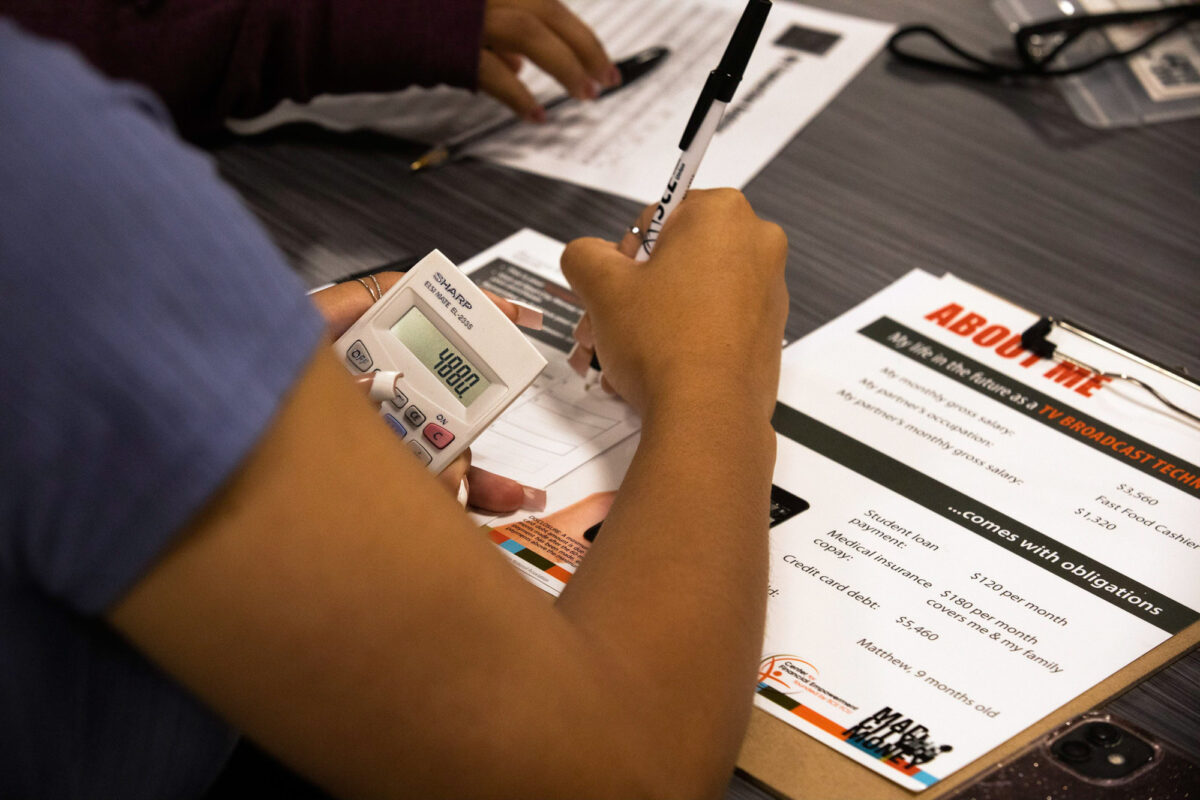Experts say tax revamp needed to fund schools. State leaders don’t want to touch it.

Nevada lawmakers celebrated in 2023 when the state increased the K-12 budget by $2.6 billion, pushing it to a historically high $12 billion.
But because of years of chronic underfunding, even that new high watermark of $13,000 per pupil each year trails the recommended level by $4,000. In 2022, Nevada was in the bottom 10 states for per-pupil spending.
A panel of experts created by the Legislature itself recently reupped recommendations it’s been making for several years — reduce property tax breaks and expand the sales tax base. But there’s little evidence that Nevada leaders have the political will to alter the only two revenue sources large enough to move the needle on education funding.
Republican Gov. Joe Lombardo promised he won’t raise taxes this session. Senate Majority Leader Nicole Cannizzaro (D-Las Vegas) declined to comment on adopting the commission’s tax recommendations to achieve optimal funding. Assembly Speaker Steve Yeager (D-Las Vegas) did not respond to a request for comment.
Two other Democratic lawmakers approached by The Nevada Independent reporters declined to specify where they stood on the report's recommendations.
Guy Hobbs, the chairman of the Commission on School Funding that made the recommendations, said if the state doesn’t find a way to sustainably increase funding for schools, Nevada's education system will stay at the status quo.
“At the end of the day … if you don't do anything, then you're accepting the education system the way that it is — that’s the reality,” Hobbs said. “If you choose to change it, then you're going to have to make some difficult decisions.”
The roadmap to more education funding
Education advocates such as the Nevada State Education Association are urging lawmakers to work toward closing the gap between Nevada’s student spending and the experts’ target by adopting recommendations outlined in a new report from the state’s Commission on School Funding. The 11-member body was created by the Legislature in 2019 and tasked with identifying an optimal level of funding for Nevada schools and crafting a 10-year plan to get there.
The new report recommends allocating an additional $2.5 billion over the next 10 years with an average annual funding increase of $256.4 million. The range over the 10-year period would be from a low of $205.1 million in year one to a high of $312.8 million in year 10.
The report recommends various options the state could take to generate the revenue needed to sustain these investments. They include broadening the sales tax base and phasing out or immediately eliminating property tax abatements — which limit annual increases in property tax bills for residential properties and certain rental properties to 3 percent and 8 percent for commercial properties — as well as a depreciation factor of 1.5 percent per year for up to 50 years that is subtracted from a property’s replacement cost when calculating its taxable value. The report states the depreciation factor results in “property valuations that are markedly less than the true or market value of the property.”
These recommendations would essentially result in higher property tax bills and add a tax on some products and services not currently subject to the state’s sales tax.
“It is constraining the amount of revenue growth that you can actually get from property tax,” Hobbs said of the abatements and depreciation factor during an interview last week. “So a number of things would have to be changed in law to allow for you to hit those numbers that you see in the report.”
The Nevada State Education Association (NSEA) is centering its lobbying efforts in Carson City this session around the report’s recommendation, which the teachers union said will help address the state’s teacher shortage, reduce turnover, increase pay for educators and reduce achievement gaps among students.
“The recommendations provided by the commission reflect careful thought, research and collective understanding of the challenges we face within our schools,” Malinda Riemersma, president of Nevada Rural Educators, a local NSEA affiliate wrote to the Senate Education Committee. “It is imperative [that] we honor their work by turning their plan into actionable policy.”

How does Nevada fund education?
The report argues property and sales taxes are the only two sources of tax revenue that have the capacity to fuel the sizable annual funding increases recommended by the commission.
Revenues from property and sales tax are already among the primary revenue sources for education funding, with property tax being the more stable and predictable of the two. Nevada has a 75 cent per $100 of assessed valuation levy to support operations across all school districts in the state, an amount that has remained unchanged since 1983, the report states.
But Hobbs said the revenue obtained through these taxes is limited by exemptions and abatements.
In 2024, the property tax abatements cost the state $1.7 billion, an amount that Hobbs says grows every year as more tax is abated.
In Nevada, sales tax only applies to tangible, retail goods. This means digital products such as e-books aren’t subject to the state sales tax.
There are also numerous tangible goods that are exempt from the sales tax, such as food and feminine hygiene products. Last year, Nevada voters approved a ballot initiative that added baby and adult diapers to the list of exempted items.
The report estimates “a little less than two-thirds of Nevada’s economic activity is not captured by the existing sales and use tax system.”
The report recommends the Legislature considers applying an excise tax on untaxed products and services that are discretionary and not life essentials — such as digital products, recreation or personal care — to generate additional revenue for education.
Hobbs told lawmakers in December these recommendations address the shift to a services-dominated economy.
“We're not a goods-dominated economy, and more and more things have shifted away from being tangible to intangible over time, and our base is becoming more narrow over time,” Hobbs said.
Of all the property tax scenarios outlined in the report, Hobbs said gradually phasing out the depreciation and abatements over a 10-year period would likely be the most palatable option. When coupled with the sales tax base reform suggested in the report, two revenue sources would combine to get closer to the education funding target, Hobbs said.
The report acknowledges that expanding either of these taxes is challenging from a political or popular perspective.
In 2023, three bills pushed by Democrats to modernize the state’s tax system, including a bill from Sen. Dina Neal (D-North Las Vegas) that would impose a sales tax on digital goods sold in the state and failed in two previous legislative sessions, did not go far.
During a Dec. 16 education accountability subcommittee meeting, Hobbs told lawmakers the commission evaluated other funding sources before landing on sales tax and property tax.
“When you're looking at numbers like $250 million a year times a 10-year period, there are very few revenue sources that produce those kinds of numbers,” he said.
Last year, a sweeping state review of existing K-12 school district audits suggested that “student achievement [is] not necessarily dependent on dollars spent,” leading Lombardo to question whether the $2.6 billion added to K-12 education during the previous legislative session was “a waste of money.”
Although Hobbs took issue with that part of the audit, calling it “myopic,” he said he agrees with Lombardo’s desire to build a system that tracks and measures Nevada students’ success. He thinks that will prove investing in education is worth it.
“Unless you have a system of reporting in place that provides some kind of feedback that — contrary to what that legislative audit said — shows increasing investments in education does have a positive return, I think there'll be some reticence,” he said.
This story was updated on 2/7/25 at 4:15 p.m. to correct the name and title of Malinda Riemersma.
